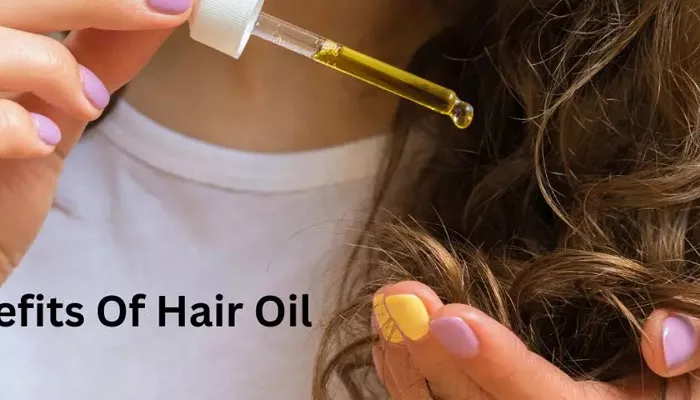In the ever-evolving world of haircare, the scalp is having a moment. From detoxifying scrubs to LED therapy combs, consumers are paying closer attention to the root of it all—literally. Among the most notable returns to the spotlight is an ancient practice with Ayurvedic roots: hair oiling.
Once a cherished tradition passed down through generations, hair oiling has found a new audience online. On TikTok, the hashtag #hairoiling has amassed over 850 million views, demonstrating its viral resurgence. But as with many trending rituals, expert opinions are divided.
While some praise the technique for its ability to nourish the scalp and boost shine, others caution against potential downsides—especially for sensitive or irritated skin. So, is hair oiling a necessary addition to your self-care routine, or simply another beauty fad?
The Benefits of Hair Oiling
Advocates of hair oiling often compare it to nurturing a plant—care for the roots, and growth will follow. Dr. Shivani Misra, an Ayurvedic doctor with Kama Ayurveda, supports this analogy. “Hair oiling is a time-honored ritual known to promote a healthy scalp and hair,” she says. “When the roots are well-nourished, hair becomes stronger, shinier, and more resilient.”
The method traditionally involves massaging oil into the scalp, which is believed to hydrate the skin, enhance blood circulation, and deliver active ingredients directly to hair follicles. Niki Mehta, co-founder of Fable & Mane, notes, “Oil strengthens the hair shaft, reduces breakage, and improves manageability. It’s a holistic ritual—beneficial for both hair and mental wellbeing.”
Dean Harris, a colourist at Larry King Marylebone, echoes these sentiments. “Hair oiling helps soften hair, reduce breakage, and can even address dandruff. It also improves circulation, contributing to overall scalp health,” he says.
Scientifically, the benefits vary depending on the oil used. Coconut, castor, and sesame oils are known to penetrate the hair shaft, reducing protein loss and improving elasticity. Ayurvedic blends, such as Kama Ayurveda’s Bringadi Oil, feature ingredients like Bhringraj and Indigo, offering antioxidant and anti-inflammatory properties that may reduce stress-induced hair loss.
However, not all experts are convinced. Zoë Passam, Senior Consultant Trichologist at Philip Kingsley, advises caution. “We generally don’t recommend scalp oiling for clients with dandruff or seborrhoeic dermatitis,” she explains. “These conditions can be exacerbated by oil, which feeds yeast on the scalp.”
How Often Should You Oil?
As with most beauty routines, consistency is key. Dr. Misra recommends oiling once or twice a week, leaving the oil in for at least 30 minutes—though overnight applications can offer deeper results.
Frequency should align with hair type and lifestyle. “Dry or curly hair typically benefits from oiling twice a week,” says Harris. “Normal hair may only need a weekly session, while oily or sensitive scalps should stick to occasional treatments.”
Timing is also important. “Avoid leaving oil on for more than 24 hours to prevent build-up,” Harris advises. Mehta suggests making it part of a relaxing ritual. “For me, it’s a Sunday tradition—my time to unwind and care for my hair.”
Choosing the Right Oil for Your Hair Type
Selecting the appropriate oil is essential. “Fine hair responds well to lightweight oils like argan or jojoba,” says Harris. “Thicker strands can handle coconut or castor oil. Curly textures thrive with olive or almond oil, and sensitive scalps may benefit from brahmi or diluted tea tree oil.”
Mehta points out that the molecular weight of the oil matters. “Lighter oils suit fine hair, while denser, more textured hair needs richer formulations.”
Ayurveda further personalizes the process, recommending oils based on one’s dosha or scalp condition. “Bringadi Oil hydrates, supports protein synthesis, and encourages regeneration at the hair bulb,” says Dr. Misra. “It’s effective for concerns ranging from dryness to stress-related shedding.”
For those looking for a versatile product, Harris recommends Larry King’s Spoilt for Choice Oil. “It strengthens and smooths without weighing hair down—ideal for pre-wash, overnight, or styling use.”
How to Wash Out Hair Oil Properly
Removing oil effectively requires technique. “You can’t expect one shampoo to remove heavy oil,” says Mehta. “Apply shampoo directly to dry, oiled hair before adding water. This emulsifies the oil. Then rinse thoroughly, repeating if needed.”
Harris offers an alternative method: “Apply conditioner first to break down the oil, then follow with a gentle shampoo. This helps retain moisture and prevents the hair from feeling stripped.”
To complete the routine, Mehta suggests finishing with a hydrating hair mask. “Our Shine Hair Mask locks in moisture and adds a glossy finish—it’s the perfect final step.”
Is Hair Oiling Right for You?
For those with a healthy scalp and a desire to nourish their hair, oiling can be a beneficial ritual—especially when done correctly with products tailored to your needs. However, it’s not a universal solution. Individuals with certain scalp conditions or fine hair may find it counterproductive.
The key takeaway? Understand your scalp’s needs, and when in doubt, consult a specialist.
Related topics:
- Top 5 Non-Vegetarian Protein Sources to Boost Hair Growth
- Hair Shedding Linked to Low B12? These 7 Foods May Help Replenish Levels
- Olsen Waves Make a Stylish Comeback Amid Economic Uncertainty


